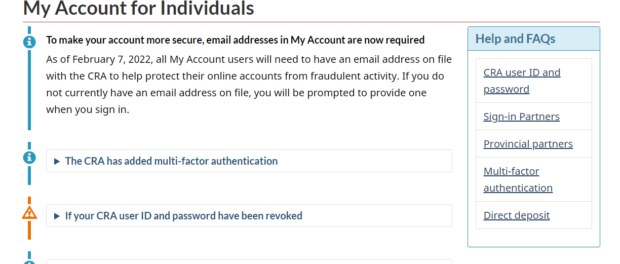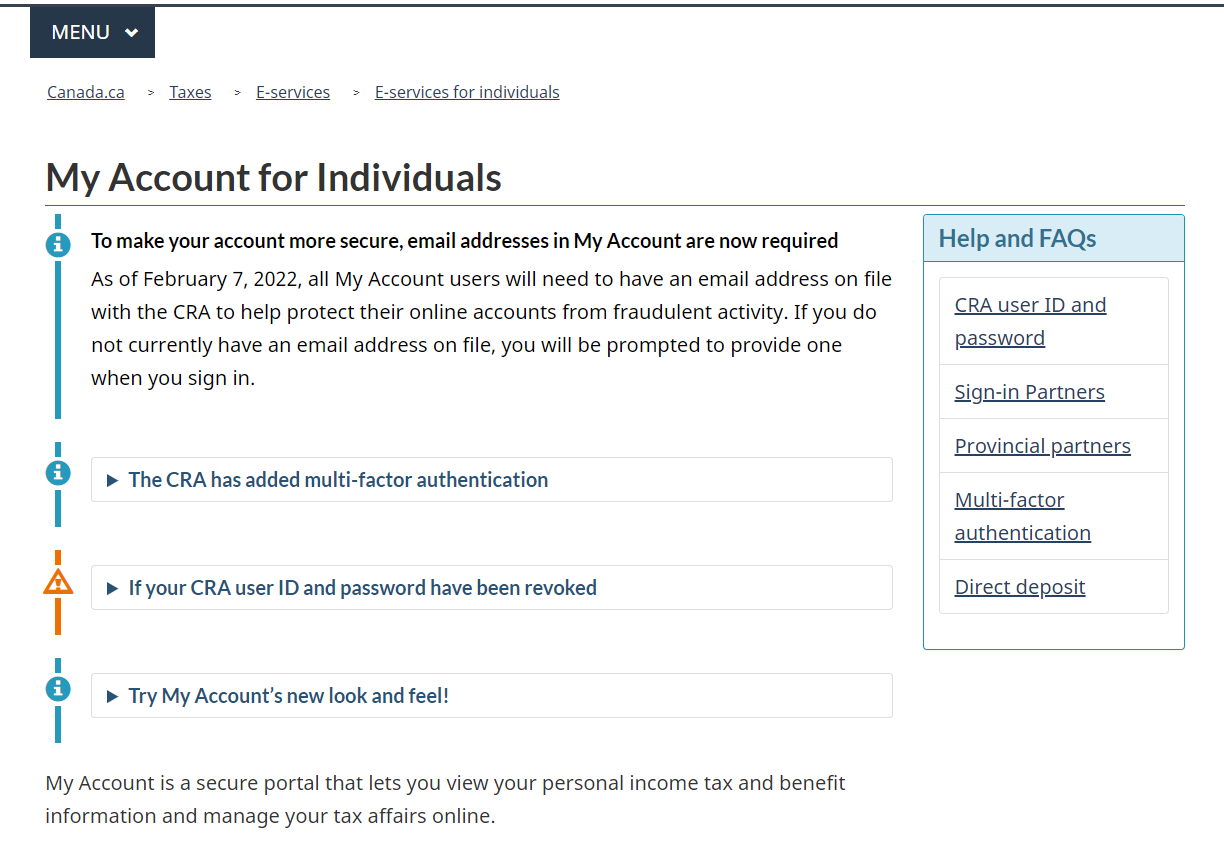RRSP Deadline for 2021

When Is the RRSP Deadline for 2021?
In Canada, the deadline for RRSP (Registered Retirement Saving Plan) contributions is 60 days after December 31st running into the new year. The date for RRSP contributions for the fiscal year 2021 falls on March 1st, 2022.
The extended cut-off date allows you more time to determine your tax liabilities. If you think you will have to pay taxes to the Canada Revenue Agency (CRA), you can still make contributions to your RRSP for the fiscal year 2021. You will still be able to take advantage of the tax deduction for your contributions to your RRSP for the previous fiscal year.
If you are making periodic contributions to your RRSP then contributions made after March 1st will be considered in the following fiscal year taxation.
RRSP Contribution Limit
This is the dollar amount you can contribute to your RRSP or your spouse’s RRSP for the given tax year. This amount is calculated by the CRA as a percentage of your income. The amount appears on your notice of assessment (NOA), a notice of reassessment (NOR), or you can find it on the CRA website in the My Account section.
If you do not contribute the full amount, you can carry over the unused limit to the next tax years.
RRSP Deduction Limit
The CRA calculates your deduction limit for each tax year. You will find this information on your NOA, NOR, or on the CRA website in the My Account section. Your deduction limit applies to contributions you may make to your own or your spouse’s RRSP. You can also make deductions when you transfer certain incomes to your RRSP.
The deduction from these transfers will not change the deduction limit for contributions. Deductible transfers include lump-sum amounts from non-registered pension plans, eligible income from testamentary trusts, or amounts in foreign retirement plans such as a United States IRA. Your unused deduction limit may also be carried forward to the following tax years.
For example, you contribute $6,000 to your RRSP, and $4,000 to your spouse’s RRSP. However, you decide to deduct all $6,000 of contributions to your RRSP, and only $3,500 of the contributions to your Spouse’s RRSP. The $500 of undeducted contributions will be added to your deduction limit for the following tax year.
This feature allows you to deduct from your contributions the amount you need to maximize your tax refund and reduce your tax liability. Also, if you believe you will be earning a higher income in the following years, you can save some of your contributions and deduct them in later years.
The CRA will keep track of your contribution and deduction limits, and they will notify you of these limits on the NOA.
Excess Contributions
In general, you will have to pay 1% tax on any contributions that exceed your contribution room for the tax year. The 1% tax is due when you exceed your deduction limit by $2,000 for each month the money stays in the plan. You may be exempt from the 1% tax on all your excess contribution if one of the following applies:
- Your contributions were Qualifying Group Plan Amounts
- You withdrew the contributions before the end of the month in which the contributions were made
Contributing to a Spousal or Common-Law Partner’s RRSP
You can make contributions to your spouse or common partner’s RRSP, as long as you stay within your contribution room. If your spouse or common partner has already maxed out their contribution limit, you may still contribute to their RRSP if you still have room.
3 things to consider when deciding if and how much to contribute to your spouse’s RRSP.
- Does your spouse or partner work?
- Does he or she need help to save for retirement?
- Have they maxed out their contribution room while you still have more room?
Contribution Age Limits
The maximum age at which you can still contribute to your RRSP is 71. However, you can still contribute to your partner’s RRSP until they turn 71. You can only continue to contribute to your spouse’s or common partner’s RRSP after the age of 71 if you have contribution room.
Contribution Example
You can make contributions to your RRSP in a lump sum, or you can contribute periodically. Since you have 60 days of the following tax year to make contributions you can calculate your tax liability and decide how much you will contribute to your RRSP to reduce your tax liability or even generate a refund.
Let’s say Jack earned $65,000 last year. His payroll department was spot on and deducted the exact amount for income tax, Canada pension plan premiums, and employment insurance premiums. So, Jack is now break-even, he doesn’t owe any income tax and he is not due a tax refund.
Jack decides to contribute $5,000 in February of the following year, he not only will create a tax refund, but he will also add to his retirement nest egg. The tax refund is generated because Jack is reducing his taxable income by contributing $5,000 to his RRSP.
The amount of the tax refund will depend on which province he lives in, as each province has its own tax rate. If, for example, he lives in Ontario he would get approximately $1,500 in a tax refund.
Qualified Investments for RRSPs
You can invest in various types of assets and investment vehicles with your RRSP. However, not all assets or securities are considered eligible by the CRA. To benefit from the choice of investment the RRSP has to be a Self-Directed RRSP. The CRA refers to this type of RRSP as a Trusteed plan.
RRSPs that are set up to invest in GICs or registered annuities are not subject to the eligibility rule. These plans are exempt from the rule as the plan itself is an eligible investment. Qualified investments include:
- money, GICs, and other deposits
- most securities listed on a designated stock exchange, such as shares of corporations, warrants, options, and units of exchange-traded funds and real estate investment trusts
- mutual funds and segregated funds
- Canada Savings Bonds and provincial savings bonds
- debt obligations of a corporation listed on a designated stock exchange
- debt obligations that have an investment-grade rating
- insured mortgages or hypothecs
Gold and silver coins are both eligible when issued by the Canadian Mint and bought directly from the Mint or a Canadian resident corporation. These corporations include banks, trust companies, credit unions, or registered securities dealers whose activities are regulated by the Superintendent of Financial Institutions.
Gold and silver coins have to be considered bullion. To meet this criterion, gold should be of 99.5% purity and silver should be 99.9% purity. The value of the precious metal coins should not exceed 110% of the fair market value. Other gold and silver bullion such as bars, wafers, or ingots, are also eligible when they meet CRA criteria.
There are various ways you can invest in gold. You could use gold ETFs or mutual funds or even buy stock in gold and silver mining companies. Several Canadian gold and silver dealers can help you make the right choice for your RRSP. You can get more details on the specifics for gold and silver to include them in your RRSP in this article.
Takeaways
The extended deadline for RRSP contributions allows you to evaluate whether you should add more investments to your RRSP. You can make various types of investments as detailed above as long as you have contribution room. You may also deduct your contributions from your income tax if you have room. And you may also roll over unused contribution and deduction room to the following year. Remember, you have until March 1, 2022 to contribute to your RRSP for fiscal year 2021.

Will Your Retirement Weather the Next Financial Crisis?
Gold has been used as an inflation hedge and a way to preserve wealth for millennia. We partnered with Silver Gold Bull, Canada's top-rated gold company (with over 280,000 five-star reviews), to offer Canadians a low-cost and tax-advantaged way to buy gold and silver through an RRSP/TFSA or another retirement plan.
Request More Info
Website: www.SilverGoldBull.ca
Speak to an Expert: (877) 707-4707
Copyright 2023 Gold RRSP - Helping Canadians invest in physical bullion for retirement

